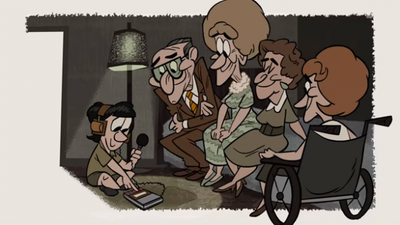The thrill of gazing into a night sky packed with stars, constellations and a stretch of our Milky Way galaxy is timeless -- and it's become increasingly rare.
Skyglow from city lights can travel up to 200 miles, which means even in the far outskirts of a city, light pollution can spoil the stars. In fact, it's not uncommon for children to be only exposed to stars through a planetarium, said Debra Elmegreen, professor of astronomy at Vassar College.
For astronomers like Elmegreen, who is also president of the American Astronomical Society, light pollution is a sad reality.
"I don't see how you can really appreciate or connect to something bigger than ourselves here on Earth if you can't look at the sky and know that it's there," she said. "I think that we would have evolved differently if our only perspective was the Earth."
Recently, Hari Sreenivasan of the NewsHour spoke with Elmegreen about the effects of light pollution across different cities, the influence of handheld astronomy apps on smartphones and the darkest places on Earth.
Quotes
"I don't see how you can really appreciate or connect to something bigger than ourselves here on Earth if you can't look at the sky and know that it's there." - Debra Elmegreen, professor of astronomy at Vassar College.
Warm Up Questions
1. What are stars?
2. What is astronomy?
3. Why do scientists study what happens in outer space?
Discussion Questions
1. What is light pollution?
2. Is there an abundant amount of light pollution in your hometown? Does that affect your view of the night's sky?
3. Debra Elmegreen, professor of astronomy at Vassar College, said it's not uncommon for children to be only exposed to stars through a planetarium. What do you think of her statement? Discuss.
Additional Resources
Supernova 'Star Guts' Give Clues to Galaxy Evolutio
Newly Discovered ‘Goldilocks’ Planet Has Potential for Life


